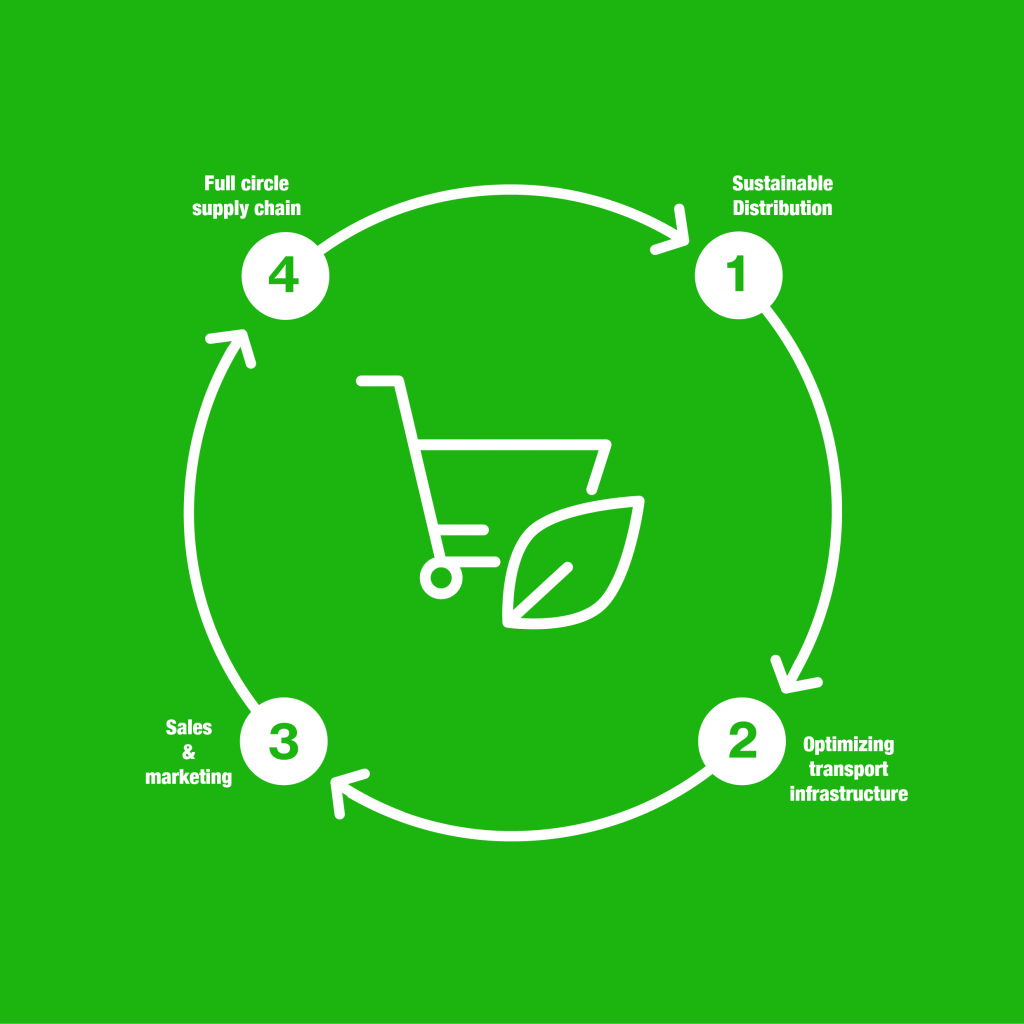
Circular Supply Chains: Reducing Waste in Production and Distribution
Introduction
Circular supply chains have gained significant attention in recent years due to their potential for reducing waste in production and distribution. By adopting a circular approach, businesses can minimize resource consumption, reduce environmental impact, and create economic value. This article explores the concept of circular supply chains and highlights their relevance in waste reduction efforts.
Historical Background
The concept of circular supply chains has roots in the early sustainability movements of the 1960s. It wasn’t until the 1990s that the idea gained traction in mainstream discussions. Over time, various milestones and developments have shaped waste reduction efforts, including the establishment of the circular economy framework and the incorporation of sustainability goals into global agendas.
Key Concepts and Definitions
Circular supply chains involve the continuous flow of materials, products, and information in a closed-loop system. This approach aims to minimize waste generation, promote reuse and recycling, and extend the product life cycle. Key terms such as closed-loop systems, reverse logistics, and product life cycle play crucial roles in understanding and implementing circular supply chains.
Main Discussion Points
Point: Designing for circularity in production
Efficient product design is paramount in reducing waste in production. By considering factors such as recyclability, disassembly, and material selection during the design phase, businesses can minimize waste generation. Strategies like eco-design, modular design, and remanufacturing enable the reuse of components, extending the life cycle of products and reducing environmental impact.
Point: Implementing circular supply chains in distribution
Reverse logistics plays a vital role in waste reduction efforts within circular supply chains. By establishing efficient processes for collection, sorting, and redistributing used products, businesses can maximize the value of materials. Reusing, recycling, and repurposing materials and products not only minimize waste but also contribute to cost savings and resource conservation.
Point: Collaboration and partnerships in circular supply chains
Collaboration between businesses, suppliers, and customers is essential to the success of circular supply chains. By working together, stakeholders can share resources, knowledge, and expertise, facilitating the implementation of waste reduction strategies. Extended producer responsibility and product take-back programs also encourage businesses to integrate waste reduction practices into their operations.
Case Studies or Examples
Numerous companies have successfully implemented circular supply chains. For example, Patagonia, an outdoor clothing brand, offers a take-back program for worn-out garments, which are then recycled into new products. Interface, a carpet manufacturer, uses recycled materials and designs products for easy disassembly, promoting circularity in their production processes. These examples demonstrate the positive outcomes and environmental benefits achieved through circular supply chains.
Current Trends or Developments
Recent trends in circular supply chains include the adoption of advanced technologies such as blockchain and data analytics to optimize material flows and enable transparency. Research findings highlight the importance of collaboration among stakeholders, emphasizing the significance of circular supply chains in achieving waste reduction targets. Additionally, emerging technologies like 3D printing and advanced recycling techniques show promise in further advancing circularity.
Challenges or Controversies
Implementing circular supply chains can present challenges, including complex logistics, lack of standardized processes, and resistance to change. Moreover, there are differing viewpoints regarding the effectiveness of certain waste reduction strategies, with debates surrounding the economic feasibility and scalability of circular supply chains. These challenges and controversies emphasize the need for continuous improvement and dialogue within the field.
Future Outlook
Looking ahead, circular supply chains are expected to grow exponentially as businesses recognize the economic and environmental benefits they offer. Advancements in technology, such as artificial intelligence and the Internet of Things, hold potential for enhancing waste reduction efforts. Furthermore, regulatory frameworks and policies aimed at promoting circularity are likely to gain momentum, fostering a supportive environment for circular supply chains.
Conclusion
Circular supply chains play a crucial role in reducing waste in production and distribution. By embracing circularity, businesses can minimize resource consumption, enhance sustainability, and create economic value. Through strategic design, collaboration, and the adoption of innovative technologies, the potential for waste reduction is vast. It is imperative that businesses and stakeholders continue to prioritize circular supply chains to pave the way for a more sustainable future.
References
Ellen MacArthur Foundation. (2020). Circular Economy. Retrieved from [link]
Geng, Y., et al. (2019). Circular economy and its key issues. Annual Review of Environment and Resources, 44, 21-45.
Kirchherr, J., et al. (2017). Conceptualizing the circular economy: An analysis of 114 definitions. Resources, Conservation and Recycling, 127, 221-232.
Tukker, A., et al. (2016). The Circular Economy: From Theory to Practice. Cheltenham, UK: Edward Elgar Publishing.